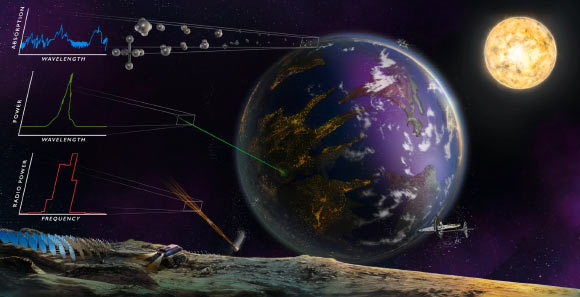Recent research by University of California, Riverside astrobiologist Edward Schwieterman and his team has unveiled intriguing possibilities in the search for extraterrestrial life: the detection of artificial greenhouse gases on exoplanets. These gases, designed to manipulate planetary climates, could serve as technosignatures indicating the presence of intelligent civilizations capable of terraforming or climate control.
Schwieterman emphasizes that while these gases pose environmental risks on Earth due to their potent greenhouse effect, they could be strategically employed by advanced societies to sustain habitable conditions on otherwise inhospitable planets, such as Mars. This concept aligns with ongoing discussions in astrobiology about the potential manipulation of planetary atmospheres to support life.
The five proposed artificial greenhouse gases identified by the researchers include fluorinated versions of methane, ethane, and propane, as well as compounds involving nitrogen and fluorine or sulfur and fluorine. These substances, commonly used in industrial processes on Earth, possess exceptionally high global warming potentials, with some like sulfur hexafluoride boasting warming powers thousands of times greater than carbon dioxide.
Crucially, these gases are chemically stable and can persist in atmospheres for up to 50,000 years, making them detectable over long periods even in trace amounts. Unlike ozone-depleting substances like CFCs, which break down rapidly and harm atmospheric layers, the proposed fluorinated gases remain inert and do not pose such risks to planetary environments.
Detecting these technosignatures requires advanced space telescopes such as the NASA/ESA/CSA James Webb Space Telescope, capable of analyzing planetary atmospheres light-years away. By leveraging infrared signatures produced when these gases absorb radiation, scientists can potentially identify them in the atmospheres of distant exoplanets. This methodological approach opens new avenues for understanding exoplanetary environments and assessing the presence of technological civilizations beyond Earth.
While the immediate detection of these gases remains speculative, ongoing advancements in astronomical technologies and planned missions offer promising opportunities. For instance, studying planetary systems like TRAPPIST-1, with its multiple Earth-sized planets, presents a compelling target for future observations aimed at detecting these unique atmospheric markers.
The implications of identifying artificial greenhouse gases on exoplanets extend beyond scientific curiosity, offering profound insights into the diversity of planetary environments and the potential for advanced technological developments in distant star systems.










